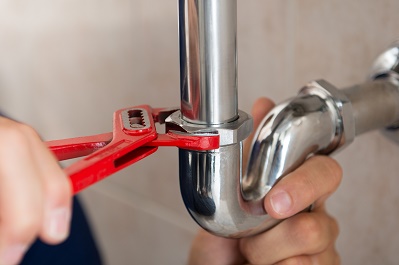 Many homeowners have wondered whether it’s worth calling a plumber to fix that leaky faucet, or if they should just tighten it themselves. Of course, the answer depends on your level of comfort and experience with doing simple home repairs. Some problems require only a simple fix, while others might be signs of major issues that could affect the integrity and resale value of your home. It’s a good idea to call a professional if you think you have a problem that could lead to further complications, but knowing some simple DIY plumbing repairs tricks for some of the most common water related issues will help you to deal with any minor problems that arise.
Many homeowners have wondered whether it’s worth calling a plumber to fix that leaky faucet, or if they should just tighten it themselves. Of course, the answer depends on your level of comfort and experience with doing simple home repairs. Some problems require only a simple fix, while others might be signs of major issues that could affect the integrity and resale value of your home. It’s a good idea to call a professional if you think you have a problem that could lead to further complications, but knowing some simple DIY plumbing repairs tricks for some of the most common water related issues will help you to deal with any minor problems that arise.
Kitchen Plumbing Repairs
Many plumbing problems can be dealt with quickly without calling a pro. For example, a leaky kitchen faucet is a fairly simple fix. First, determine where the water is coming from (base or spout), then shut off the water supply. You’ll need an Allen wrench and other common tools such as a screwdriver. Most leaks require you to replace the seat washer, which you can find by following the instructions here. If that doesn’t stop the leak, it’s probably time to have a licensed, insured plumber take a look.
Refrigerators and electric ranges are often easy to fix when they experience a problem. For instance, if your icemaker is producing tiny cubes or no ice, there is usually something blocking its water supply. Unplug the refrigerator and remove the icemaker screws, then pull it out to check for ice blockage. Then check the saddle valve that supplies water to the icemaker, usually located under the kitchen sink or beneath the fridge. You can replace the water inlet valve that supplies water to the icemaker by following the step-by-step instructions here.
Bathroom Plumbing Repairs
Another common plumbing issue is a running toilet, which wastes water. If your toilet is running, remove the back cover and check that the rubber bulb inside is resting on the water. If it is loose, the water will continue to run. Try pulling it up and tightening it in place with a screwdriver—but not too tight; it has to sink and rise with the water in the tank. New toilet kits are inexpensive and relatively easy to install. Or, simply shut off the toilet’s water supply and call a plumber if you aren’t confident you can fix it yourself.
Another common household plumbing issue is a slow draining bathtub. Here’s a great video to show you how to clear a clogged bathtub drain without using chemicals.
Dealing with your own plumbing repairs will certainly save money. The bigger benefit may be the sense of satisfaction and ownership that comes when you ‘do-it-yourself’. Whatever you decide to DIY, always practice good safety procedures, and don’t hesitate to call a professional if you need help.






